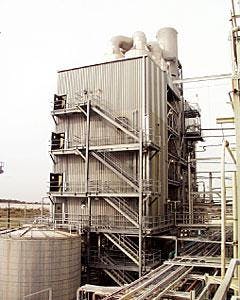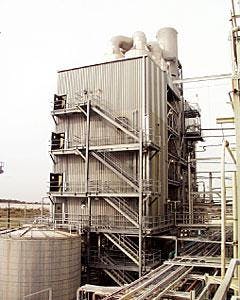Refining catalyst prices and demand are increasing, according to several major catalyst suppliers.
Effective this spring, UOP LLC, Des Plaines, Ill., began raising prices for its Activated and Versal alumina products, produced in Baton Rouge, by up to 13%. UOP explained the prices were raised in-line with raw material and energy increases.
This month, Virginia-based Albemarle Corp. announced a price increase for hydroprocessing catalysts, by a minimum of 6%, due to steadily increasing costs of energy, labor, and packaging, said the company. Albermarle warned that prices would continue to fluctuate during the cost shifts of molybdenum. Other catalyst manufacturers are likely to follow.
“The cost of new hydroprocessing catalysts has increased in the past year,” said Augie De Capite, president of Dynamic Catalysts & Adsorbents Inc., Severna Park, Md., speaking generally of the industry. “We have seen prices ranging from $7 to $9/lb.” This is a direct result, he said, of molybdenum prices increasing from $8/lb to more than $30/lb. Modern high-activity catalysts can contain more than 15 wt % molybdenum.
Demand for molybdenum used in the production of hydroprocessing catalysts is likely to increase up to 5%/year, according to Roskill Information Services, London. This will support additional price increases. Increases are also caused by the 5%/year growth in the iron and steel industry, currently the largest consumer of molybdenum.
Although catalyst recycling and regeneration capacities are likely to increase through 2008, the need for fresh catalyst will not diminish because increased use of catalysts is motivated by progressively tighter emissions and fuel-economy constraints.
Global demand for hydroprocessing catalysts continues to increase rapidly, according to Huub Cuijpers, Albemarle’s global business director. Refiners favor high-performance catalysts to satisfy ever-tightening clean fuels regulations, said Cuijpers.
In financial terms, catalyst sales worldwide topped $2.9 billion in 2004 and are forecast to grow to $3.9 billion by 2009, or 5.7%/year (OGJ Online, Aug. 31, 2004.)
New hydrocracking units for distillate production in China, new refineries planned in Saudi Arabia, Iran, and Venezuela, and a major push for refinery and petrochemical facility integration will also increase growth in the catalyst market.
Refiners are looking for high-tech catalyst formulations to satisfy their need for lower-cost production and value-added products such as propylene, according to speakers at Stone & Webster’s 6th annual FCC Forum, The Woodlands, Tex., north of Houston, May 11-12, 2005.
Some of this need will be met by an increasing use of catalyst additive products. In fact, the market for additives has increased to 30% today and will increase further. Exactly what component is considered to be an additive and what component is considered to be a catalyst is becoming blurred.
For example, in some of the new propylene maximization processes, the Y zeolite catalyst level is only around 30%, with the additives constituting upwards of 70% of total unit inventory, according to Intercat’s presentation at the forum. Increased production and recovery of propylene will enable refiners to generate improved margins.
This article details some notable developments that have occurred since the last catalyst survey report (OGJ, Oct. 6, 2003, p. 49.).
The complete list of catalyst suppliers and their current formulations, including RIPP, SINOPEC catalysts listed here for the first time, can be found exclusively in the Refining Catalyst Compilation-2005 at Oil & Gas Journal Online (www.ogjonline.com).
Divestitures, mergers
Last month, Albemarle completed acquisition of the catalyst business of Akzo Nobel NV. The transaction includes hydroprocessing and FCC catalyst manufacturing plants in Amsterdam and in Pasadena, Tex. Additionally, Albemarle acquired 50% ownership of the unconsolidated joint ventures of FCC SA in Brazil, Nippon Ketjen in Japan, and Eurecat of France with affiliates in the US, Saudi Arabia, and Italy.
This month, Engelhard Corp., Iselin, NJ, announced acquisition of US-based Almatis AC Inc., including its adsorbents and catalyst business. The acquisition expands Engelhard’s technology portfolio to include high-purity alumina products, catalyst supports, and alumina-based adsorbents and desiccants. Also included are production and product development facilities in Port Allen and Vidalia, La.
In October 2004, CRI International, Houston, sold its Porocel Adsorbents, Catalysts, and Services business to AluChem Group. The catalyst presulfiding, separation, regeneration, and resale service business includes facilities in Lafayette, La., Singapore, and Luxembourg. Porocel will operate the business sectors as wholly owned subsidiaries of AluChem.
New technology
Earlier in 2005, UOP announced the upcoming commercialization of its new solid-catalyst alkylation system.
Baku Heydar Aliyev Refinery, an integral part of State Oil Corp. of Azerbaijan and one of the most complex refineries in the FSU, awarded a contract to UOP for the basic design for a new high-octane-gasoline complex. The complex will incorporate an Alkylene process unit, an Oxpro process unit, and a Butamer process unit.
The Alkylene process will be the world’s first commercialization of UOP’s motor-fuel alkylation process that uses a solid catalyst, instead of liquid acid, to alkylate C4 olefins with isobutane. The complex will begin production in 2008.
Also this year, Engelhard introduced commercial launch of NaphthaMax II, an FCC catalyst designed to increase performance by 2%, equating to an additional 50,000 gpd of gasoline from the same amount of crude.
In an industry that measures technology improvements in tenths of a percent, being able to boost yields at that level is important to refiners who have experienced dramatic increases in crude oil prices, according to Engelhard.
Capacity expansion
Last year, Axens North America announced an agreement with DeGussa Corp. for the manufacture of Axen’s hydrotreating catalysts and support material at DeGussa’s facility in Calvert City, Ky. Axen decided to expand catalyst manufacturing into North America due to a growing demand for hydrotreating catalysts. Such catalysts are needed for the high-severity applications required to meet increasingly stringent environmental regulations such as low-sulfur transportation fuels.
The cooperation will also result in improved delivery times and expanded logistical services.
This year, Albemarle announced planned expansion programs for its Pasadena, Tex., Amsterdam, and Niihama, Japan, facilities. The expansions will increase hydroprocessing catalyst manufacturing capacity.
In Texas, Albemarle will build a new 10,000 tonne/year plant with initial production slated for the end of 2006. A specialized zeolite production line will be installed in the Amsterdam plant. All three locations will undergo debottlenecking. Increased investments will be directed to combinatorial chemistry research and development.
The company recently opened a new facility in Bayport, Tex., to expand specialty zeolite production. In particular, Albemarle will expand ZSM-5 production, a zeolite used to enhance light-olefins production and to increase gasoline octane.
According to Albemarle, refiners are increasing their demand for octane-enhancing alternatives due to the phaseout of methyl tertiary butyl ether and the growing use of gasoline post-treatment to produce low-sulfur fuels.
Advanced Refining Technologies LLC (ART), a joint venture of Chevron Products Co. and Davison Chemicals, a unit of W. R. Grace & Co., announced plans to expand hydroprocessing catalyst production capacity by 30% at its Chicago plant. The strategy responds to increased global demand for high-performance catalysts and the enactment of clean-fuels regulations in various countries.
Previously, ART increased production at its Curtis Bay, Md., and Lake Charles, La., manufacturing sites. ART has several other options under review, including a grassroots world-scale plant at an as yet undetermined location. ✦

